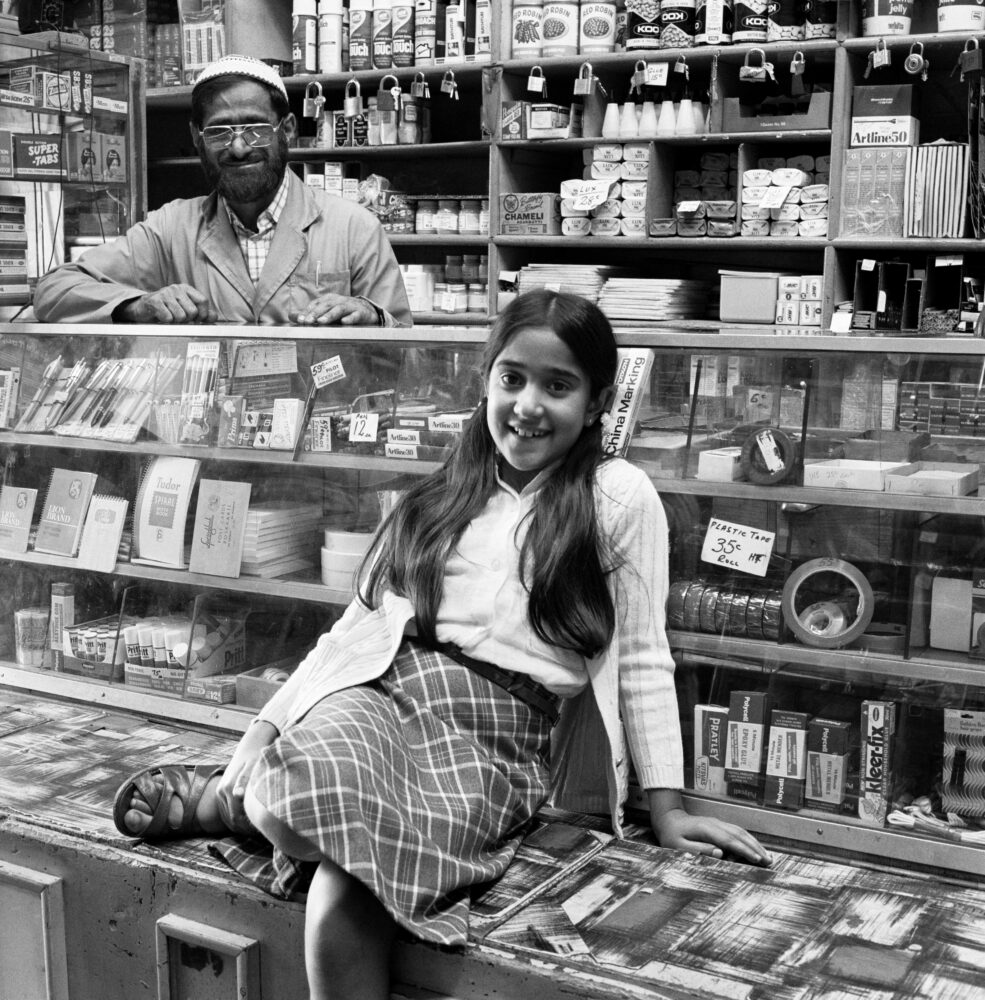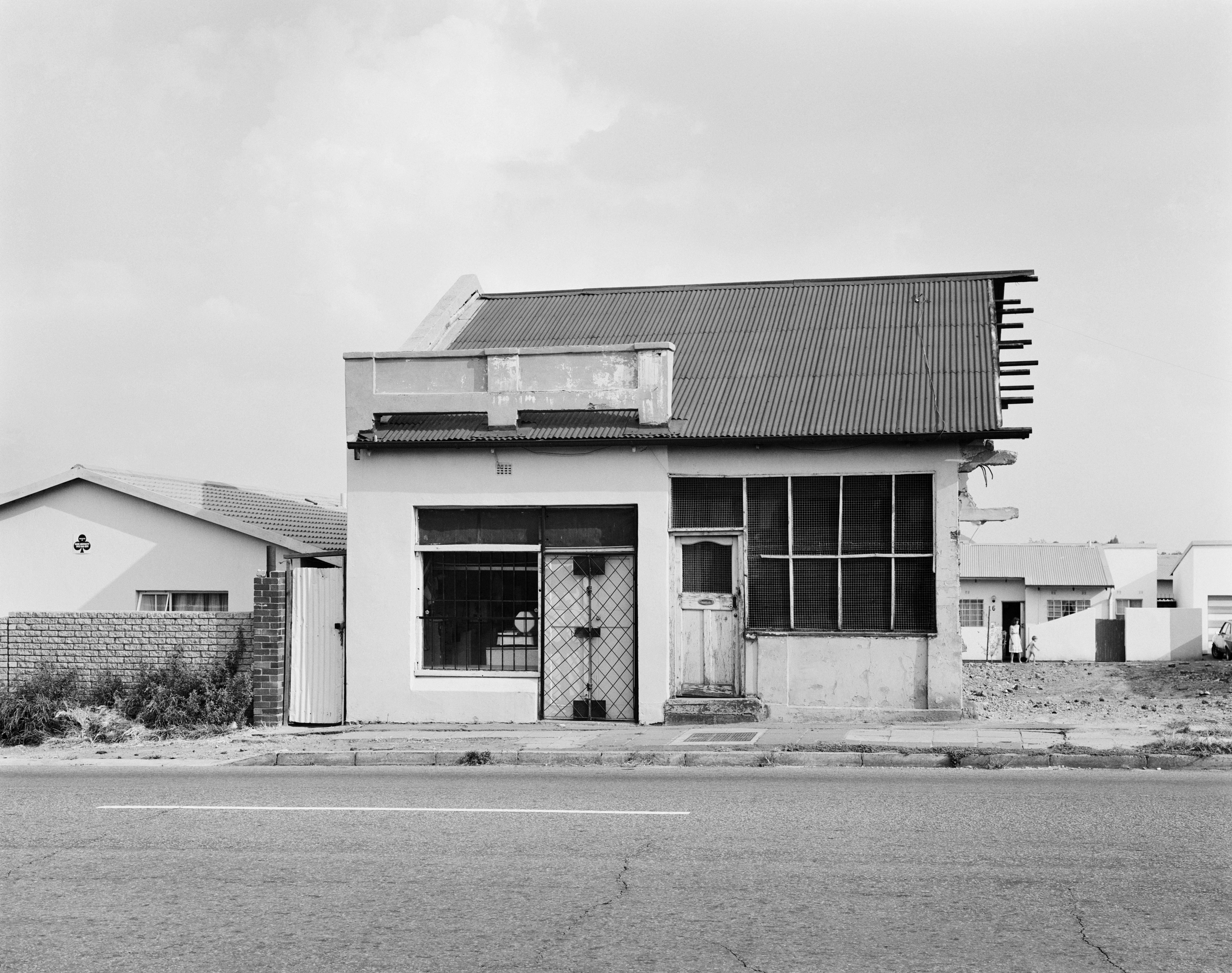Rebuild: South African photographer David Goldblatt’s exhibition Fragments of Fietas on at the Goodman
Gallery in Johannesburg honours the resilience of a community fractured and displaced by apartheid.
The black and white photographs in Fragments of Fietas stayed with me long after I left the Goodman Gallery. At first, I couldn’t quite explain why. They’re simple in a way, documentary and direct, portraits of ordinary people in a place that no longer exists as it once did. Yet as I reflected on the exhibition, I began to feel something more profound, a yearning that spoke to the meaning of the word home.
What is home, really? Is it a physical location, a plot of land, a set of walls and a roof? Or is it something less tangible, the feeling of being loved and supported, the sense of belonging that grows between people who share a place and a purpose? The more I sat with the photographs, the more I realised that it’s both.
Home is people and place. It is the comfort of knowing where you will lay your head at night, but also the familiarity of streets that hold memories. It is the continuity between past and present that allows you to trace where you come from and who you have become. And it is this, perhaps more than anything, that apartheid tried to erase.
Fragments of Fietas — on at Goodman Gallery in Johannesburg until 29 November — brings that erasure into painful focus.
Between 1948 and 2016, late South African photographer David Goldblatt returned repeatedly to Fietas, a suburb west of Johannesburg’s city centre, to record the impact of apartheid’s forced removals. His camera traced the lives of a community fractured, displaced, and ultimately scattered by the Group Areas Act. Over nearly seven decades, Goldblatt documented what was lost, what remained, and what could not be rebuilt.
The exhibition coincides with the publication of a new book of the same name, edited by his daughter, Brenda Goldblatt, and featuring an essay by sociologist Ashwin Desai. Together, they form both an archive and an elegy — a record of destruction, but also of endurance.
From Johannesburg’s founding in 1886, segregation was built into its DNA. The city’s earliest planners, driven by racist fear and white entitlement, sought to keep black, coloured, and Indian people apart from white residents. In 1893, the government of the South African Republic established three racially defined “locations” west of town — Kaffir, Coolie, and Malay — for Africans, Indians and coloureds, respectively. After a suspected plague outbreak in 1904, the Coolie Location was burned to the ground, and many displaced residents moved into the Malay Location, later renamed Pageview. However, the inhabitants affectionately called it Fietas.

No one knows precisely where the name came from. Some say it was derived from the Cape Malay word Fietna, meaning to “sing, gossip, argue, or to make noise”. Others claim it evolved from an Afrikaans slang term for something unpleasant, a label imposed by white residents who viewed their neighbours as undesirable. Whatever its roots, Fietas was more than its reputation.
By the middle of the 20th century, it had become one of Johannesburg’s few non-racial suburbs — a compact, bustling community where Indian, coloured, Malay, Chinese, African, and even a few white residents lived side by side. Its narrow streets and modest houses created a kind of enforced intimacy. Families shared lavatories, children played in the streets long after dark, and shopkeepers greeted each other by name.
“There was no rich or poor,” recalls a man who lived with his family of 11 in a two-room house on 14th Street.
“Everyone was close to each other. There was no feeling of alienation or aloneness in Fietas; you were always part of the place.”
That sense of belonging was fragile, though, because it existed within a system designed to crush it. When the National Party came to power in 1948, Fietas became one of its targets.
The Group Areas Act of 1950 empowered the state to declare entire neighbourhoods “white areas” and forcibly remove everyone who did not fit that category. By 1956, the lower half of Fietas was earmarked for demolition; by 1962, the rest followed. Residents were ordered to relocate to Lenasia, a desolate patch of veld, 20km south of the city.
Many resisted, marched, petitioned, and appealed to the courts. But the state was relentless.
 A butcher’s shop half-demolished yet still in use
A butcher’s shop half-demolished yet still in use
In 1977, police with dogs forced out most of those who remained. The bulldozers followed. The department of community development, whose name could not have been more ironic, tore down houses, carved up tarred streets, and left the rubble. A few families held on until the very end, their homes standing like teeth in a broken mouth.
It was during this time that Goldblatt rode into Fietas on his bicycle one Sunday morning, camera and tripod strapped to his back.
“The demolitions had begun,” he later wrote. “Houses and shops that had been there a week ago were gone.”Goldblatt met community leader Ossie Docrat and told him how ashamed he felt to witness such destruction as a white South African.
Docrat, whose family had lived there for three generations, replied with quiet dignity: “I feel as though my teeth are being pulled out one by one. I run my tongue over the spaces, and I try to remember the shape of what was there.”
That line stayed with me. It captures the slow violence of dispossession — not only the physical loss of a home, but the disorientation that follows, the attempt to remember what had been taken.
In Goldblatt’s photographs, that loss is rendered visible: a butcher’s shop half-demolished yet still in use; a man framed in the doorway of his collapsing store; a row of houses gutted while, on either side, new homes for white residents rise from the dust. The contrasts are jarring but familiar, echoes of the many South African landscapes where inequality remains etched into the ground.
Goldblatt’s lens was never sentimental. He did not romanticise his subjects. Yet in these images of ruin, there is tenderness — an understanding of what it means to keep living amid erasure.
Between 1949 and 2016, he watched Fietas transform from a thriving community into a wasteland, and then into something else again: a site of memory, haunted by what was once possible.
The book and exhibition honour not only the photographer’s life’s work, but also the resilience of the people who refused to be defined by their dispossession.
Looking at Goldblatt’s images, I kept thinking about the tenuousness of what we call home. It can be taken, dismantled, and rewritten by those with power. But it also endures in ways that can’t be legislated out of existence. Home is not just a structure; it is a story that keeps retelling itself through generations. The people of Fietas carried that story with them to Lenasia and beyond. They rebuilt what they could, and mourned what they lost.
The destruction of Fietas might have seemed final, yet in the persistence of memory there is always the possibility of life returning to a parched landscape. Goldblatt understood this. His photographs are acts of witnessing, but also of faith that by looking closely and remembering honestly, we might find a way to rebuild.
Leaving, I again thought about home — not as a possession but as a condition of being, a relationship to others and to a place. It is what apartheid tried to serve, and what we must learn to restore.
Fragments of Fietas reminds us that to belong is both a right and a responsibility. It asks us to remember the ruins, not as relics of the past, but as mirrors held up to the present, urging us to protect the fragile, essential thing that is home.
Fragments of Fietas is on at Goodman Gallery in Johannesburg until 29 November.